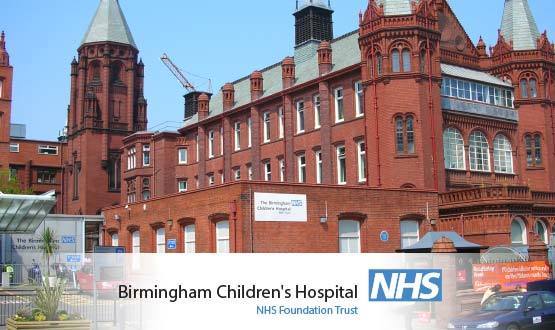Formula 1 tech monitors sick children
- 18 November 2015

An NHS hospital is using technology developed to monitor drivers in the McLaren Formula One racing team to keep track of the health of seriously ill children.
Birmingham Children’s Hospital NHS Foundation Trust is hosting a three-year research study that uses wireless sensors developed by Isansys Lifecare to collect data such as heart rate, breathing rate and oxygen levels to provide clinicians with an early warning sign if a patient is deteriorating.
This data is transmitted via a low energy Bluetooth connection to the Isansys gateway located near to the bedside, which provides a real-time display of a patient’s vital signs.
The gateway then wirelessly transmits this clinical information to McLaren’s data analytics platform, Lifeinsight, which processes the data and sends out an audio alarm if a child’s measurements go below or above a certain level. Similar technology is used to keep track of the body measurements of F1 drivers during a race.
The trust hopes that this system will mean that deteriorating patients can be recognised and treated more quickly than a paper-based approach where vital signs are recorded by nurses on a chart every one to four hours.
The Real-Time Adaptive and Predictive Indicator of Deterioration, or RAPID, study is funded by a £1.8 million grant from the Wellcome Trust and the Department of Health through the Health Innovation Challenge Fund to accelerate the translation of innovated technology into practical clinical applications.
The study, which is taking place on all the trust’s cardiac wards, started one year ago and aims to have recruited about 1,200 patients by the time it is completed in 2017.
A spokesman for Birmingham Children’s Hospital told Digital Health News that just over 150 children and young people have been involved in the study so far and that all families of patients are invited to take part.
“One of the recurring pieces of positive feedback received from patients and families is the extra freedom the wireless sensors that monitor the children, which are provided by Isansys Lifecare, allows. Patients are able to move around freely while still being monitored meaning they do not have to stay in bed, which is a real positive for children and young people,” the spokesperson said.
The next major milestone for the project is next spring/summer when use of the system will be expanded.
The project is led by Dr Heather Duncan, the trust’s intensive care consultant, who got in touch with McLaren after hearing a talk from one of their team regarding digital based monitoring methods and thought the technology could be adapted to healthcare.
She said the ability to track and identify deterioration towards a cardiac arrest will “give doctors earlier warning signs and the chance to save lives”.
“I genuinely believe this will change the way we care for patients in hospitals forever.”
The trust said that if the study demonstrates that the system is effective and brings benefit for patients then it will look into rolling out the system on a permanent basis.
The Lifeinsight technology has been used in clinical trials run by pharmaceutical company GlaxoSmithKline. This includes its use to monitor patients recovering from strokes or managing neurological disorders such as motor neurone disease.
McLaren is also working with the University of Oxford to use sensors to monitor surgical students during training.





